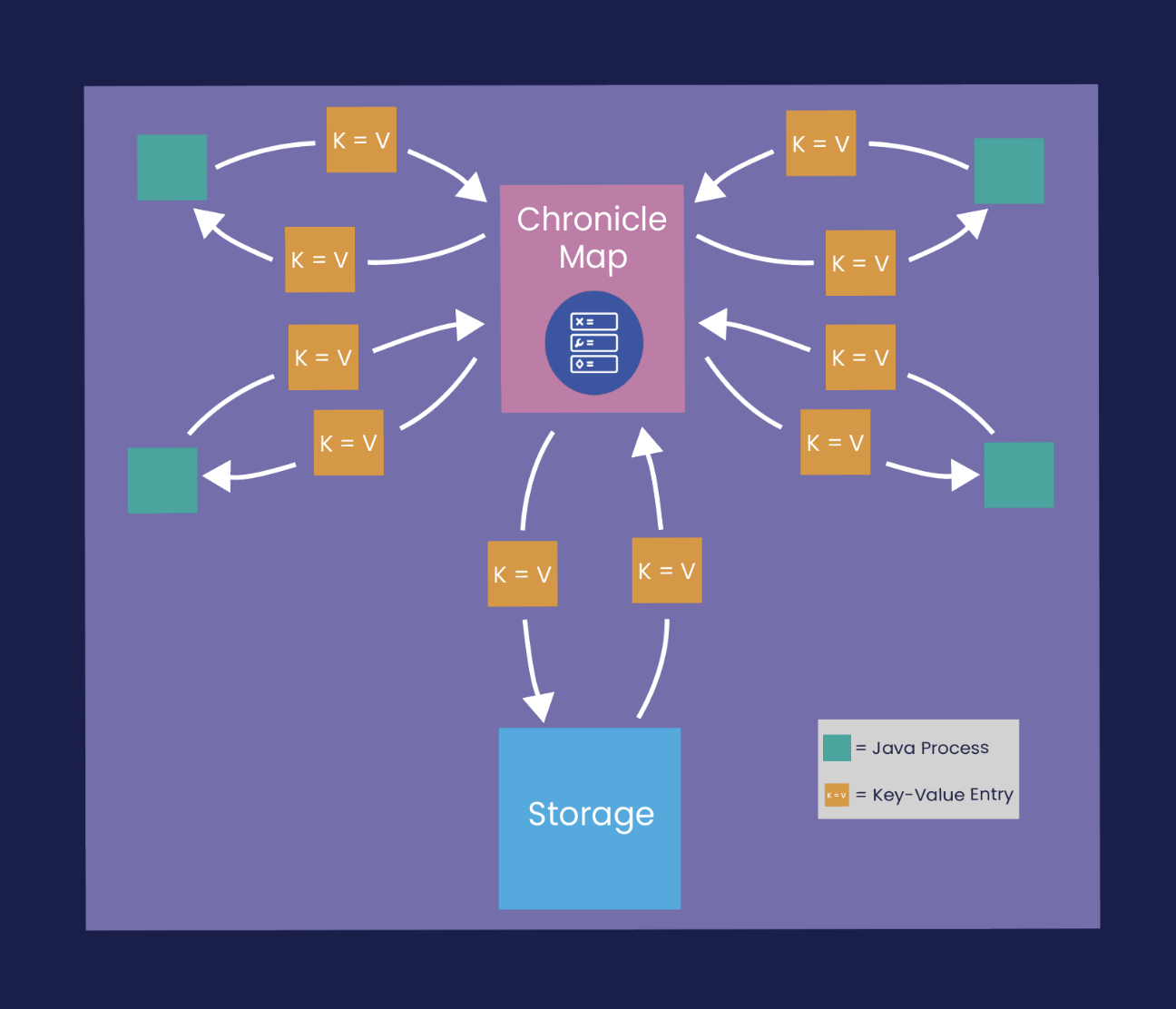"Chronicle Map is a really great project. I use it for off-heap storage, it incredibly increases performance"
-Dr Khalil El Mazouari, AbnomX
Trusted by Top-Tier Financial Institutions



How Does It Work?
You define the structure of the entries you wish to store and set the maximum number of entries. Chronicle Map will create an appropriately sized memory mapped file.
Data is transferred directly using shared memory to other processes on the same server. Unlike some competing products, we do not use TCP/IP loopback, which introduces latency and failure modes.
This approach gives you outstanding performance, we have measured data being transferred between processes in a staggering 40 nanoseconds.

Licensing and support
At Chronicle we pride ourselves on the stability and knowledge of our development and support team. With decades of experience from the financial industry, you can trust us with your toughest challenges.
Get expert help
Our expert consultants are ready to support you with any issues that may arise. We understand that the Chronicle Map is usually only a small part of a system, and our experienced developers can help with architecture and latency issues in other areas if needed.
Simple licensing model
Our simple and transparent licensing model provides certainty and ensures that Chronicle Map Enterprise is available to businesses of all sizes, from the largest bank to the smallest hedge fund.
Articles about Chronicle Map
On Linux, you can create sparse files, where only the pages (of 4 KiB) that are touched utilise either memory or disk space. This allows you to memory map large virtual regions without worrying about wasted memory or disk In this program, you can see it reserves 8 TiB (8,192 GiB) Figure 1. Test 1:…
As most Java developers know, putting values in a Java Map (like a HashMap) involves creating a large number of auxiliary objects under the covers. For example, a HashMap with int keys and long values might, for each entry, create a wrapped Integer, a wrapped Long object and a Node that holds the former values…
Compared to a year ago, we have significantly improved the throughput at which we can achieve the 99%ile (worst one in 100). What tools and tricks did we use to achieve that? What are we testing? Chronicle Queue appends messages to a file while another thread or process can be reading it. This gives you…